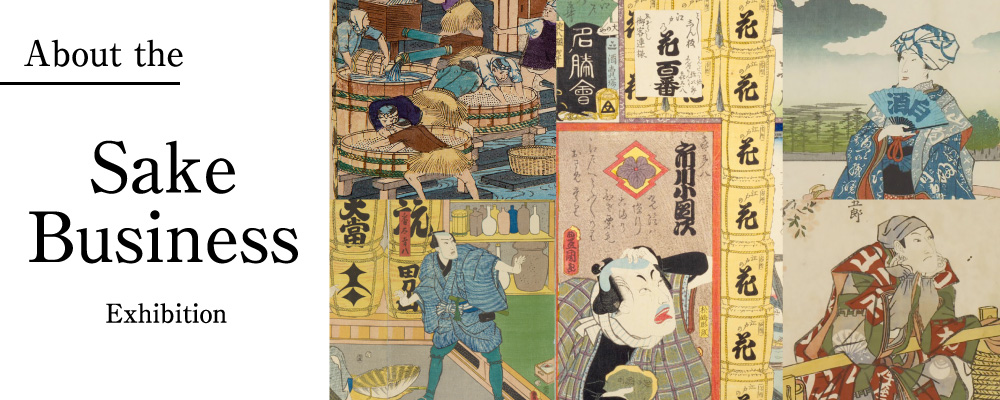Previous Article
100 Ghost Tales

‘Dankake’ (adding ingredients to the mash in multiple steps), ‘hiire’ (heating sake at low temperatures to prevent spoilage), ‘morohaku’ (using polished rice both for steamed rice and koji rice), and ‘kanzukuri’ (making sake in winter when temperatures are low to control the fermentation process)… Many of the techniques commonly used in modern sake brewing were perfected in the early Edo period (early 1600s), after developments made by monks in Nara near the end of the Muromachi period (mid 1500s).
The famous breweries of the Edo period were concentrated in Settsu and Izumi (present-day east Hyogo to central Osaka), mostly in Itami and Ikeda in the early years and Nada later on. Sake brewed in these areas was transported to Edo by cargo vessels dedicated to transporting sake casks. Edo was the hub for people, including samurai and servants of various clans, so the demand for sake was high. It is said that more than one million “4-to” casks of sake (4-to= Approx. 72 liters) were consumed in Edo in the years leading to Tenpo (1830-44).
Kudarizake, transported from the Kansai and Tokai regions, was unloaded from the cargo vessels onto small boats at the mouth of the Sumida River, then ferried to wholesalers’ warehouses built along the banks of Shinkawa (present-day Shinkawa, Chuo, Tokyo). There, it passed through the hands of middlemen and retail shops before ending up in the hands of consumers. At the storefronts of these liquor shops, sake was sold by weight, and customers were allowed to have a taste while standing instore, a service termed as ‘izake’, which lead to the development of izakaya seen today. In addition, the consumption of sake increased along with the development of the food service industry as a support system for the daily lives of many Edo citizens. It was also during this period that sake, which used to be reserved for special occasions such as festivals and events, became a common beverage in everyday life.
At that time, brands from Itami including Kenbishi, Otokoyama, and Ikeda’s Nanatsuume, were popular. Interestingly, even when Nada sake became dominant during the latter half of the Edo period, these sake brands continued to be depicted in literature and paintings. It is clear from the Ukiyo-e featured in this exhibition that these brands were treated as synonymous with sake throughout the Edo period.
In the Meiji era, the special business rights that allowed only those who had brewing stock to brew sake was abolished. Now, anyone who paid the license tax was granted the necessary permission to enter the brewing industry. In the 12th year of the Meiji era (1879), both breweries and the brewing process peaked nationwide. Even in regions other than Kansai, long regarded as a famous brewing region, a movement to improve sake brewing had begun, to make sake that was as good as that brewed in Nada. Furthermore, acceptance of modern Western science such as the use of thermometers and microscopes, improvement of hiire (pasteurization) methods, and the addition of salicylic acid* greatly enhanced the brewing process of sake.
However, as illustrated by the Ukiyo-e prints featured here, the inner workings of sake breweries did not change much from the Edo period even through the Meiji era, and sake was still brewed manually by craftsmen. The sake that we are accustomed to today is made using a mix of modern scientific technology and traditional technology that has existed since before the Edo period.
Yuki Hata (Niigata University Japanese Sake Centre, Specially-Appointed Associate Professor)
*Note from KDM: addition of salicylic acid to sake was officially banned later in 1969.